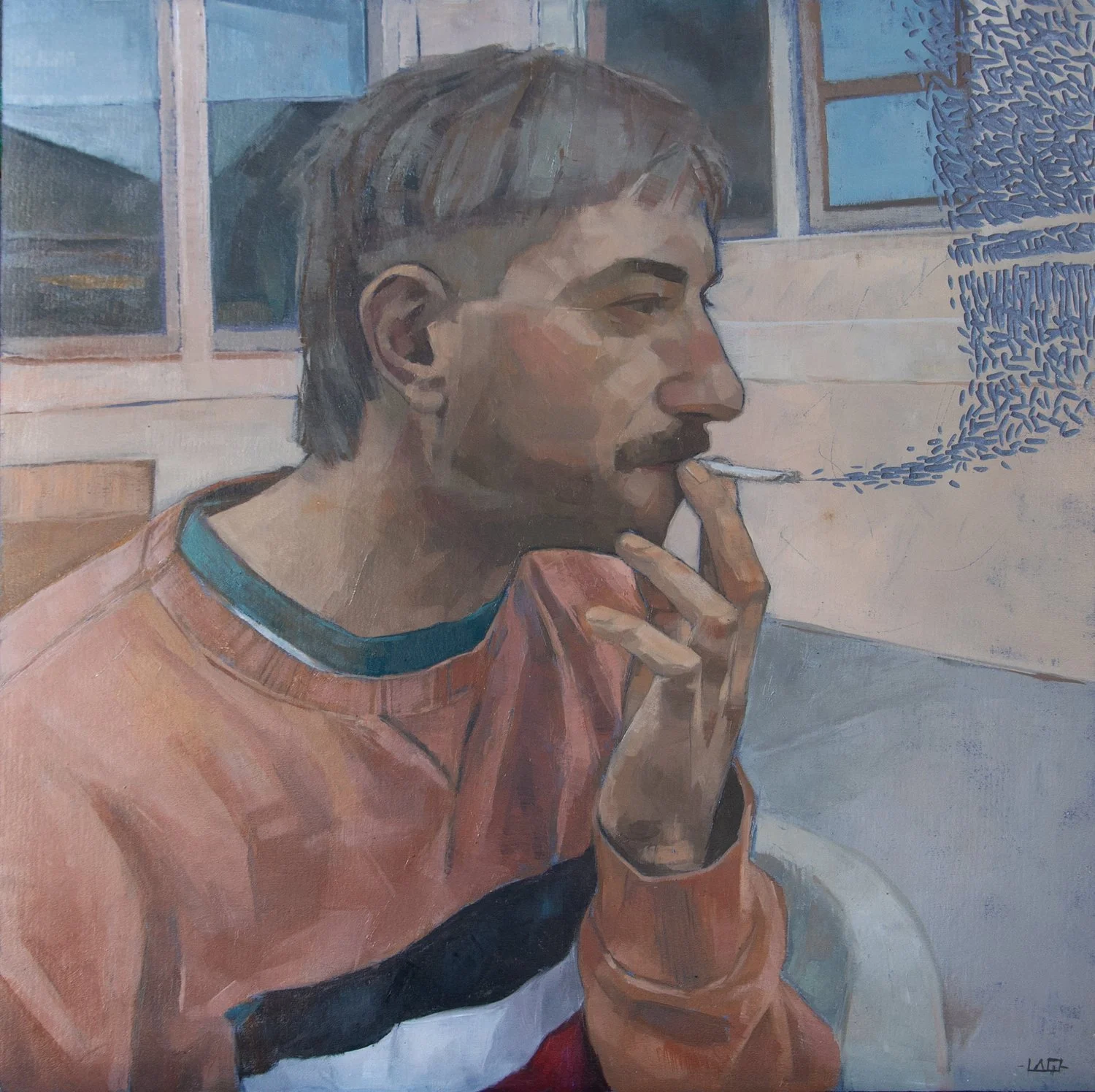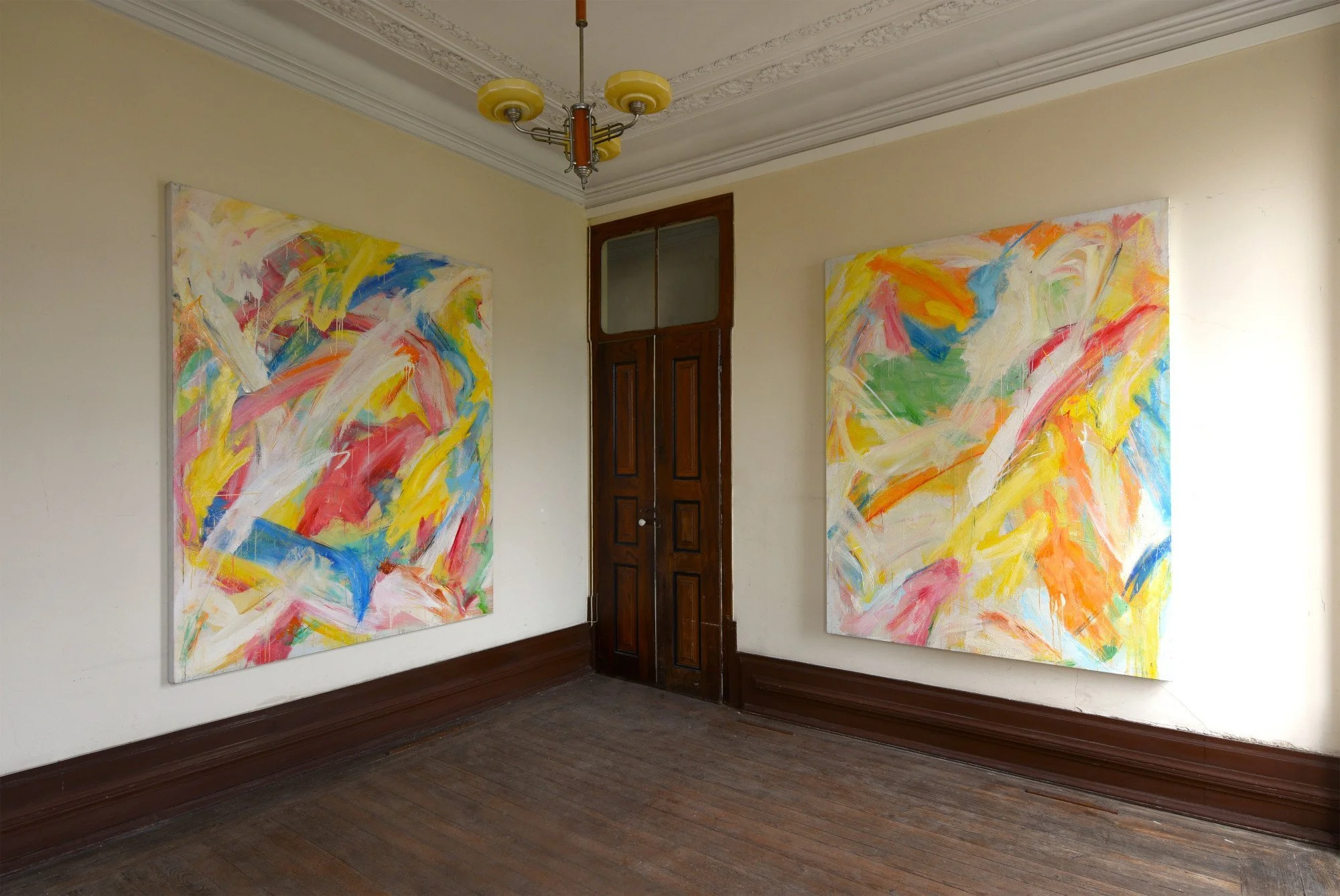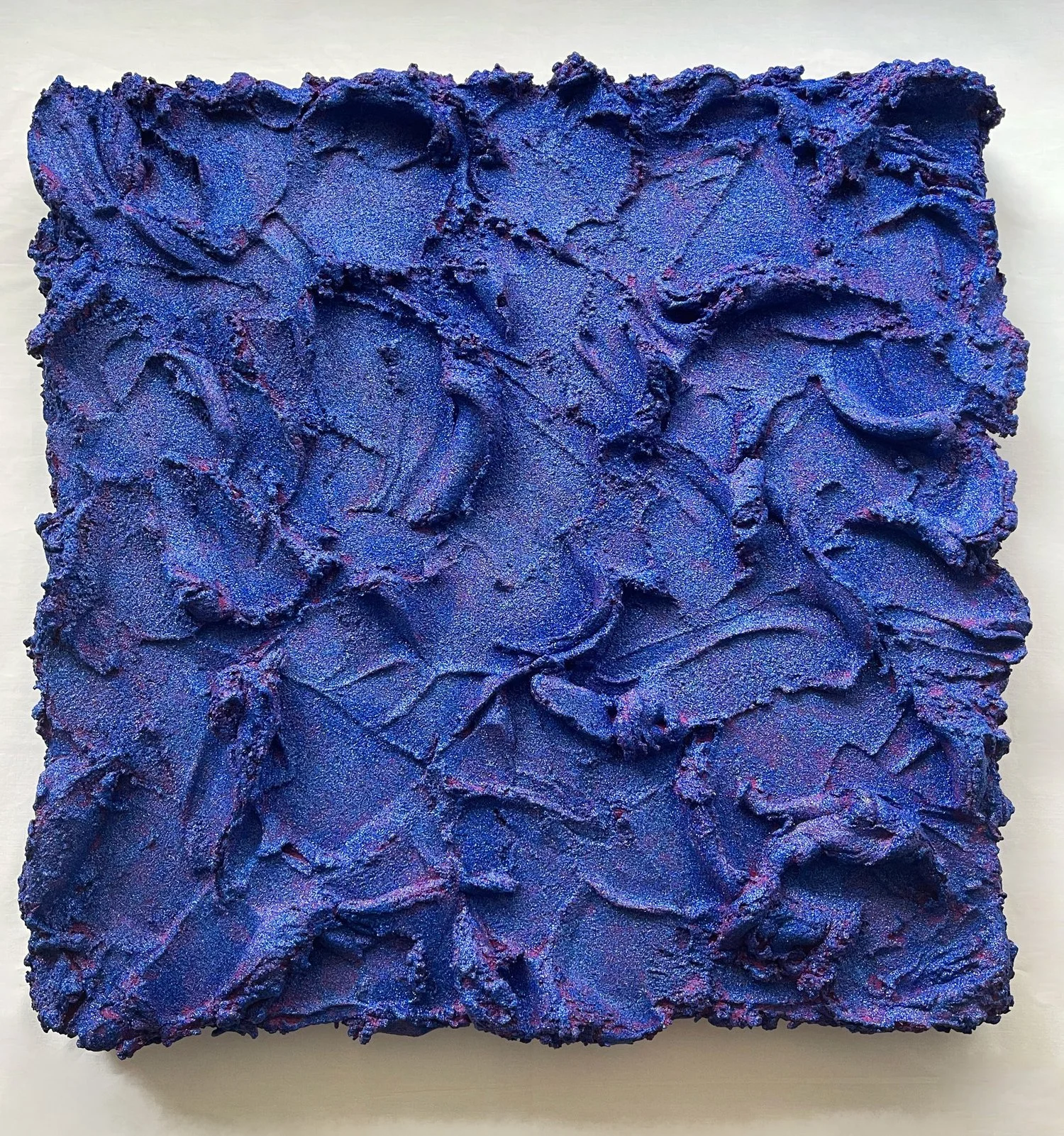10 Questions with Linda Aquaro
Originally from Puglia, Linda Aquaro has lived and worked in Rome for about twenty years. Parallel to her activity as an architect, she carries out her artistic research, which ranges among different fields, from the most traditional ones (painting and engraving) to the most contemporary (digital).
She is the co-founder of the "Officine Incisorie" Association, involved at national and international levels in promoting chalcography and engraving artists through exhibitions, meetings, and workshops on the subject. In addition, in recent years, she has collaborated with magazines and small independent publishing houses in the field of illustration.
Linda Aquaro Portrait
ARTIST STATEMENT
Aquaro's research is strongly focused on figurative art and portraiture. The artist is fascinated by the relationship between the volumes of the face and space: the portrait is often combined with pure geometries, playing with the perception of voids and solids. Her profession strongly conditions this architectural dimension of anatomy. The artist loves experimenting with different languages, from the most traditional (painting and engraving) to the most contemporary such as digital graphics, to the combination of multiple techniques.
In this sense, the latest works combine traditional painting with engraving: the works are in fact made on linoleum, which is engraved and hollowed, thus integrating the pictorial image with the engraved texture.
INTERVIEW
Let's start talking about you. Who is Linda Aquaro, and how would you describe yourself in 3 words?
Linda Aquaro is a multifaceted person both in work as in art. I love experimenting and knowing, and this nature has allowed me to accumulate several transversal experiences over time. In summary, I would say curious, stubborn, and indeed multifaceted.
What do you wish you knew about contemporary art before you got started?
I don't know. In reality, there are many things about contemporary art still to be explored and others that I will probably never be able to grasp because they are simply far from my sensibility. I was lucky enough to evolve artistically in always stimulating contexts. When I started living and studying in Rome, I was able to attend museums and galleries, and this put me in a position to "educate" myself in contemporary art right from the start, at a time in my life when I was probably more receptive and conscious. In hindsight, I just wish I could have seen more.
Un momento all’aperto, oil on linoleum, 56,5x58,5 cm, 2021 © Linda Aquaro
Son finite le uova, oil on linoleum, 30x33 cm, 2021 © Linda Aquaro
Could you tell us a little more about your background? And what experiences shaped your artistic practice?
I have an artistic education at the high school level. I later started architecture studies in Rome. My training as an architect has strongly contaminated my entire artistic universe, the perception of space, the structure and composition of my works. It also put me in a position to approach the work of art in a designed manner, as if it were a small construction site, thinking about the various stages of work and the materials/techniques to be used. I love to experiment and study diversified technical and material approaches to better express my ideas.
In your work, you focus on figurative art and portraiture. Can you tell us about the process of creating your work? How do you choose your subjects and models, and how do you work on your paintings?
I consider my work a sort of emotional visual diary, which obviously reflects analysis and perceptions of my experience. The images I create illustrate my reality through a realism that often has - paradoxically - some surrealistic features.
I always start from a concept or emotion that I try to translate into an image. I study the composition through initial sketches, and at this stage, I begin to think about the proportions and the color palette. Portraits are often juxtaposed with geometries or fall into geometrical contexts: these formal contrasts between the naturalness of the faces and the stiffness of the background elements, the play between solids and voids, help me to give further emphasis to the work.
Once the work has been conceived, I support the pictorial phase with photographic references that I often create ad hoc. In other cases, I draw from the network. In the first case, I create small sets in the studio with models for portraits, or with objects for other types of works. Finally, before starting to paint, I prepare the support.
Where do you get inspiration for your work? Are there any artists or artistic movements you particularly like or get inspired by?
As I said before, my work is inspired by the universe in which I live. I am fascinated by shapes, and I find a lot of inspiration from architecture and sculpture, from the skillful use of solids and voids. I have many references ranging from painting to illustration to comics. It is impossible to list them all, but there are untouchable loves, artists, and works that reconcile me with myself every time I see them live. They are mostly big names in early twentieth-century painting, such as Aristide Sartorio, Corsos, Segantini, Klimt, Schiele, Cambellotti or Morelli.
Immersiva, oil on linoleum, 29,7x21 cm, 2021 © Linda Aquaro
La stretta, oil on linoleum, 29,7x21 cm, 2021 © Linda Aquaro
What is the most challenging part of your work? And how do you incorporate and mix all the elements together?
Perhaps the most challenging part is the intellectual and preparatory part. I consider, first of all, my work as intellectual work. The conceptual part, the ideation and the research, are the moments of the creative process that I find the most challenging. Paradoxically, the execution phase is the most relaxed one. In the last period, I often have reasoned and analyzed my creative process, and this analysis involved a deepening of my own modus operandi. If we think in general terms, the process of creation itself starts from a destructive act, that is, from the destruction of the idea itself. Nothing of what has been achieved is comparable to what was imagined. This is because the creative process is a non-linear process that actually carries with it many small destructions. This analysis led me to try to integrate within my method a part of the breaking and destruction of the work itself. I find this very fulfilling and reconciling. All this resulted in the search for technical approaches that would allow me to violate the pictorial surface, etching and scratching it. Also, being an engraver, the idea of finding a combination of engraving and painting immediately fascinated me. From this incipit, the latest works were born, realized on linoleum support: the engraved and hollowed texture of the support is placed next to the pictorial texture. Once completed, the work is then partially destroyed and deprived of its entirety, bringing its interior to the outside.
You are very active on social media channels and have a good following. What are your thoughts on digital presentations, like fairs and exhibitions and social media platforms for artists? Do you think these are good opportunities?
Nowadays, social networks have become essential for artistic communication, and I fear that their use is now essential. It is clear that the ease of communication and transmission of images greatly simplifies some processes of dissemination and use of the work of art, but at the same time, does not favor quality. There are many platforms that offer valid services and are within everyone's reach. Still, for this reason, one often runs the risk of entrusting one's work in virtually crowded and dispersive contexts. In short, there are potentially many possibilities thanks to the web, but they cannot be for everyone at the same time. You need to know how to choose and always focus on quality, even if the path is longer and more tortuous. I am convinced that it is the strategy that pays off the most in the long run.
Sul doppio, oil on linoleum, mounted in wooden box with mirror, 35x40 cm, 2021 © Linda Aquaro
Aperto, oil on linoleum, mounted in drawer, 21x17,5 cm, 2021 © Linda Aquaro
Chiuso, oil on linoleum, mounted in drawer, 21x17,5 cm, 2021 © Linda Aquaro
How do you keep your community engaged? And what is the best strategy to be noticed by collectors online from your experience?
In reality, my social activity focuses mainly on Instagram. Taking care of one's community assiduously is a real job, and this is certainly beyond my nature. In my available time, I simply try to present my work, involve my followers in my artistic process, and the activities that revolve around my artistic universe (exhibitions, competitions, and workshops). And I believe that the best strategy to attract collectors is to be yourself and not distort yourself simply to please other people. Because, if it is true that art is fiction, it is also true that you cannot pretend with art.
What are you working on now, and what are your plans for the future? Anything exciting you can tell us about?
In recent months I have been working on pieces for my next solo exhibition entitled "From the inside", which opened on October 23rd in Rome. The works explore the concept of interior/exterior on multiple levels and are somewhat the emotional synthesis of my experience with the pandemic and what it entailed. Furthermore, I will participate in my first contemporary art fair in Rome in November, and I am really very excited.
Finally, share something you would like the world to know about you?
I am a simple person who loves simplicity.


























